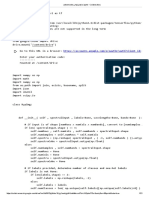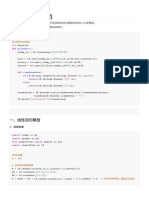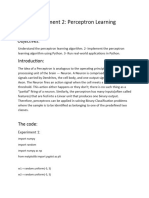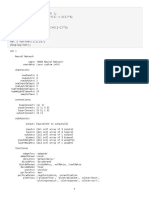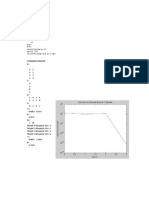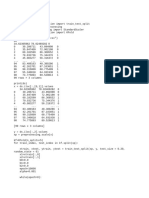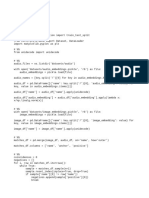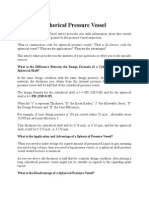>> help
MULTI LAYER PERCEPTRON
>> p = [-2:0.1:2]
>> t = 1+sin(pi*p/4)
>> plot(p, t)
>> sample = newff([-2 2], [2 1], {'logsig', 'purelin'})
>> sample.iw{1,1}
>> sample.lw{2,1}
>> sample.b{1,1}
>> sample.b{2,1}
>> y = sim(sample,p)
>> plot(p,t,p,y,'o')
>> sample.trainParam.epochs = 50;
>> sample = train(sample,p,t)
>> sample.iw{1,1}
>> sample.lw{2,1}
>> sample.b{1,1}
>> sample.b{2,1}
>> y1 = sim(sample,p)
>> plot(p,t,p,y1,'o')
>> sample1 = newff([-2 2], [10 1], {'logsig', 'purelin'})
>> y2 = sim(sample1,p)
>> plot(p,t,p,y2,'o')
>> sample1.trainParam.epochs = 50;
>> sample1 = train(sample1,p,t)
>> y3 = sim(sample1,p)
>> plot(p,t,p,y3,'o')
>> t1 = 1+sin(2*pi*p)
>> plot(p,t1)
>> sample2 = newff([-2 2], [10 1], {'logsig', 'purelin'})
>> y4 = sim(sample2, p)
>> plot(p,t1,p,y4,'o')
>> sample2.trainParam.epochs = 50;
>> sample2 = train(sample2,p,t1)
>> y5 = sim(sample2, p)
>> plot(p,t1,p,y5,'o')
>> sample2.trainParam.epochs = 200;
>> sample2 = train(sample2,p,t1)
>> y6 = sim(sample2, p)
>> plot(p,t1,p,y6,'o')
>> sample3 = newff([-2 2], [5 1], {'logsig', 'purelin'})
>> y7 = sim(sample3, p)
>> plot(p,t1,p,y7,'o')
>> sample3 = train(sample3,p,t1)
>> y8 = sim(sample3, p)
>> plot(p,t1,p,y8,'o')
>> x = [-2: 0.1: 2]
>> y = [-2: 0.1: 2]
>> z = x.*y
>> plot3(x,y,z)
>> sample3 = newff([-2 2; -2 2], [10 1], {'logsig', 'purelin'})
>> in1 = [x; y]
>> y9 = sim(sample3, in1)
>> plot3(x,y,y9)
>> sample3 = train(sample3,in1,z)
>> y10 = sim(sample3, in1)
>> plot3(x,y,y10)
SINGLE LAYER PERCEPTRON
>> Pper = [0 0 1 1; 0 1 0 1]
>> Tper = [0 0 0 1]
>> plotpv(Pper, Tper)
>> sampleper = newp([0 1; 0 1], 1)
>> Yper = sim(sampleper, Pper)
>> plotpv(Pper, Yper)
>> sampleper.iw{1,1}
>> sampleper.b{1}
>> plotpc(sampleper.iw{1,1}, sampleper.b{1})
>> sampleper.trainParam.epochs = 20;
>> sampleper = train(sampleper, Pper, Tper)
>> Yper1 = sim(sampleper, Pper)
>> plotpv(Pper, Yper1)
>> sampleper.iw{1,1}
>> sampleper.b{1}
>> plotpc(sampleper.iw{1,1}, sampleper.b{1})
>> Pper = [0 0 1 1; 0 1 0 1]
>> Tor_nor = [0 1 1 1; 1 0 0 0]
>> plotpv(Pper, Tor_nor(1,:))
>> figure(2)
>> plotpv(Pper, Tor_nor(2,:))
>> sampleper1 = newp([0 1; 0 1], 2)
>> Yper2 = sim(sampleper1, Pper)
>> sampleper1 = train(sampleper1, Pper, Tor_nor)
>> Yper3 = sim(sampleper1, Pper)
>> sampleper1.iw{1,1}
>> sampleper1.b{1,1}
Competitive Network
>> Pc = [1 1.1 0.9 -1 -0.8 -1.2; 1 0.8 1.2 -1 -0.9 -1.1]
>> samplec = newc([-2 2; -2 2], 2)
>> Yc = sim(samplec, Pc)
>> yclass = vec2ind(Yc)
>> samplec.iw{1,1}
>> samplec.b{1,1}
>> samplec = train(samplec, Pc)
>> Yc1 = sim(samplec, Pc)
>> yclass1 = vec2ind(Yc1)
>> samplec.iw{1,1}
>> samplec.b{1,1}
LEARNING VECTOR QUANTIZATION
>> Plvq = [1 1.1 0.9 -1 -0.8 -1.2 0 -0.1 0.1; 1 0.8 1.2 -1 -0.9 -1.1 0 0.2 -0.2]
>> Tlvq = [1 1 1 1 1 1 2 2 2]
>> T = ind2vec(Tlvq)
>> samplelvq = newlvq(minmax(Plvq), 3, [.67 .33])
>> Ylvq = sim(samplelvq, Plvq)
>> Yc = vec2ind(Ylvq)
>> samplelvq = train(samplelvq, Plvq, T)
>> Ylvq1 = sim(samplelvq, Plvq)
>> Yc1 = vec2ind(Ylvq1)
>> samplelvq.iw{1,1}
>> samplelvq.lw{2,1}
NEURAL NETWORK TOOLBOX GRAPHICAL USER
INTERFACE
>> nntool



